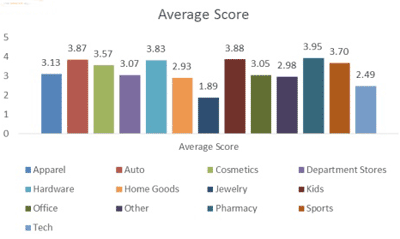Is Ecommerce Stuck In The Mud?

Is E-commerce Stuck In The Mud?
After our first Holiday Ecommies Review of 30+ top online retailers (@Ecommies is a new ecommerce ratings, review and award site coming soon). It’s clear e-retailers are stuck in the mud. Holiday 2013 merchandising was flat, uninspired and not original or festive.
REI.com and Williams-Sonoma created Holiday 2013 bright spots. REI.com’s adoption of the Woot-like “Deal of the Day”, exciting heroes (largest image on a webpage is a “hero”), clearly marked free shipping on all orders (in December) and exceptional merchandising won REI.com an Ecommie Award for outstanding Holiday Merchandising.
Williams-Sonoma turned in an outstanding Holiday 2013 performance too. Williams-Sonoma won an Ecommie for its amazing “foodie” merchandising. You expect foodies to win November, but Williams-Sonoma won December too with one of the best Buy More, Save More Graphics we’ve seen.
First Ecommies Holiday 2013 Report Card is on Google Docs (raw data).
Ecommies on Haiku Deck (Holiday 2013 conclusions and Ecommies mission).
Online retailers are stuck in the mud for several reasons:
- Confused by conversational nature of social media.
- Don’t understand the mobile revolution isn’t about smart phones.
- Outdated catalog based promotions, merchandising, presentation.

2014 Ecommerce RX
How can online retailers improve by next Christmas? Here a prescription for ecommerce retailers. Ecom merchants should take at least two of these ideas and call us in the morning.
- Embrace social media.
- Join Mobile Revolution.
- Let print catalog ideas go, embrace the web.

Embrace Social Media in 2014
Most major e-retailers follow 1% or less of their followers. Such limited following makes communications difficult and limited follow backs says, “we TALK more than listen”.
When P&G evaluated R&D scientist and product developers around the world they found 1.5M “at least as good as us”. P&G changed “invented here” thinking to achieve a goal of at least 50% of new products start outside of P&G’s labs.
If a proud R&D company such as P&G changes thinking on their ability to create the next generation of consumer products goods then e-retailers should follow 10% or more of their followers. Not following back means a brand or company isn’t part of the social conversation. Don’t treat social media like interactive advertising.
Sophistication expectations for online marketing of even casual followers is high. Online retailers can’t afford a “do the minimum” approach to social media marketing since. What does “doing the minimum” communicate to customers?
- Ecommerce merchants don’t really want to have conversations with customers.
- E-retailers are stuck in the past.

PRESENCE on a social network implies acceptance. If you have a Twitter account and only follow 1% you aren’t really PRESENT. Ignorance of social media’s overt and covert “rules” isn’t acceptable anymore. If you have social media accounts understand their implied promises, promises you’ve made by creating those accounts include:
- You will respond to direct communication on the channel.
- You will follow and support others.
- Saying THANK YOU when people do something NICE for you just because they can (and following back is one BIG way to say Thank You) isn’t required but a good idea.
![]()
E-retailers must embrace social media marketing for a better 2014.

Mobile Is A Revolution Not A Thing
E-retailers are doing the minimum on mobile marketing too. Websites must be responsive or agnostic to any receiving device, but mobile marketing implies a deeper commitment.
Mobile Revolution Changes Everything
- Information architecture (tagged snippets).
- Design (use cloud to create fast loading pages).
- Functionality (key processes such as checkout must be pad/phone friendly).
- Social (websites must have a near real time social “layer”).
![]()
Mobile changes the way we organize, present and curate online information. Mobile is a movement not a thing. Visualization, tagged information snippets, taking full advantage of mobile’s different User Interface (swiping, infinite vertical and horizontal waterfalls) sets “Mobile First” companies apart from those only creating the “mobile minimum”.
The mobile revolution is about much more than smart phones and pads and current e-retailer mobile performance is lacking as this (click chart to see study):

Let Catalog Ideas Go
Treating the web as a catalog or store extension was understandable when the web began. Today’s social, mobile and lightening fast web requires dedication, investment and unique strategies. Don’t bring “door busters” to an environment where there are no doors.
Pillars of Online Commerce:
- Free Shipping.
- Low Prices (great deals).
- Infinite Inventory.
- Social shopping.
- Creative merchandising.


Free Shipping and Low Prices
In 2014 online merchants who attempt to charge for shipping or make customers jump through hoops to “win” free shipping will lose. In 2015 online merchants who don’t offer free shipping out and back (returns too) will lose.
Embrace free shipping out and back on all orders, all shipments now to beat the herd and win in 2014. If an e-retailer is smart they think of “free shipping” as one of the most acceptable forms of online “advertising”. Merchants who carry free shipping on their P&L as an ad cost such as Amazon, Zappos, REI and others will be ahead of the game in 2014.
Free shipping creates three benefits:
- Average order value (AOV) may go down (since there is not trigger).
- Number of orders goes WAY UP (more than compensating for lower AOV).
- Number of social interactions goes up.
![]()
Is it strange to think of free shipping as increasing social? Retailers willing to pay for shipping “feel” more friendly. If your competitors continue to charge for shipping create a counter adding up shipping savings on your website, put the counter on every page and you will crush your “still charging for shipping” competitors in 2014. Think of Free Shipping as advertising (and cut other types of advertising if needed to support free shipping).

Social Shopping
Why does Amazon have 1M inbound links? Amazon is a User Generated Content (UGC) machine. Amazon values UGC, courts it and creates effective competition to get it. Amazon was late to social media marketing game, but with 22M Facebook likes and almost a million Twitter followers they catch up fast (thanks to benefits of online SCALE).
Gplus Under Utilized Blue Ocean
Our retailer social analysis confirmed what we expected – Gplus is a blue ocean of disruptive potential for ecom merchants. Even Amazon hasn’t figured out GPlus, so one strong 2014 recommendation is for your ecommerce team to spend serious time learning how to use GPlus’ revolutionary tools.
network “red ocean” of competition.

Infinite Inventory
Discussing Infinite Inventory in 2008 with a $150M catalog retailer was difficult. The retailer couldn’t understand “digital inventory”. For a lifelong catalog merchant “inventory” is a physical good with costs.
“inventory” is published web content in the minds of most Internet marketers. Costs of adding one more item to “digital inventory” is pennies, content that can easily generate dollars creating a trade (pennies for dollars) most would make.
After Google’s algorithm changes ecommerce websites must embrace “Infinite Inventory” and the content marketing the concept implies. “Sell” every product even remotely connected to your business. Create pages for products you don’t carry (yet). Ask if you should sell the product and ask for reviews. Link to where customers can find the product and earn affiliate commissions on conversions.
Amazon sells ANYTHING and EVERYTHING because they know trading pennies for dollars is always a good deal and the benefits of online scale are awesome (lol).

Creative Merchandising
Digital data can be spun, combined, tagged and curated in creative ways. Every merchant can read the story of how customers combine products inside their analytics. When you see a combination create a new product page. New pages create a larger Google traffic fishing net and your digital merchandising Big Data approach creates unique products you, not Amazon or other big box retailers, may OWN in search marketing.
Netflix is a great Spin and Snip digital product merchandising example.
Remember when Netflix put up a million bucks to improve their review algorithm? Money well spent since I’ve yet to find a 3 star movie I don’t like. Netflix’s “digital merchandising” genius is spinning and snipping finite inventory to make their inventory feel personal, relevant and infinite.
Summary
Websites are different than catalogs. The longer an ecommerce website is tied to the albatross of a print catalog the greater the company’s peril. Peril even cherished brands like L. L. Bean must overcome.
2014 can be an amazing year if online retailers embrace social media’s conversation, become part of the mobile marketing revolution and stop thinking like print catalog merchants. It’s time to play a new game, a digital game that requires chess-like strategy, backgammon-like speed and poker courage. Ante is going up, hope your ecommerce website wins the pot in 2014.
Latest posts by Martin (Marty) Smith (see all)
- The New Ecommerce: Current Best Practices - August 18, 2014
- Can Subscriptions Smite The SEO Giant? - August 11, 2014
- Invisible Giant: Why Its Hard To See the New SEO - August 4, 2014




